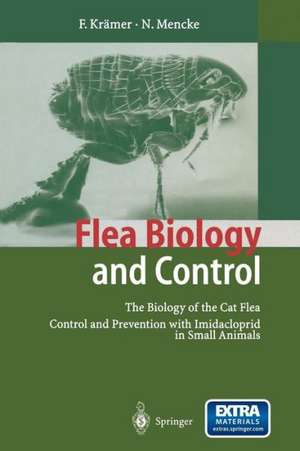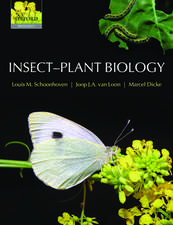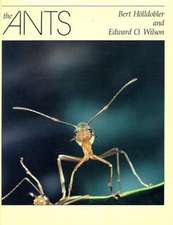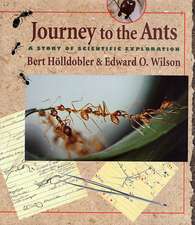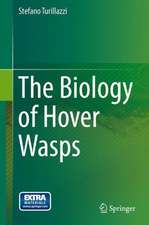Flea Biology and Control: The Biology of the Cat Flea Control and Prevention with Imidacloprid in Small Animals
Autor Friederike Krämer, Norbert Menckeen Limba Engleză Paperback – 23 aug 2014
Preț: 383.33 lei
Nou
Puncte Express: 575
Preț estimativ în valută:
73.36€ • 76.12$ • 61.32£
73.36€ • 76.12$ • 61.32£
Carte tipărită la comandă
Livrare economică 15-29 martie
Preluare comenzi: 021 569.72.76
Specificații
ISBN-13: 9783642626043
ISBN-10: 3642626041
Pagini: 212
Ilustrații: XIII, 192 p. 8 illus.
Dimensiuni: 155 x 235 x 11 mm
Greutate: 0.3 kg
Ediția:Softcover reprint of the original 1st ed. 2001
Editura: Springer Berlin, Heidelberg
Colecția Springer
Locul publicării:Berlin, Heidelberg, Germany
ISBN-10: 3642626041
Pagini: 212
Ilustrații: XIII, 192 p. 8 illus.
Dimensiuni: 155 x 235 x 11 mm
Greutate: 0.3 kg
Ediția:Softcover reprint of the original 1st ed. 2001
Editura: Springer Berlin, Heidelberg
Colecția Springer
Locul publicării:Berlin, Heidelberg, Germany
Public țintă
ResearchCuprins
1 Introduction.- 2 General Morphology.- 3 Taxonomy.- 4 Dissemination and Economic, Veterinary and Medical Importance.- Origin and Distribution.- Economic Importance.- Veterinary Importance.- Medical Importance.- 5 Developmental Cycle of Fleas.- Eggs.- Larvae.- Pupae.- Preemerged Adults.- Adults.- 6 Flea Epidemiology.- 7 Flea-Related Dermatitis.- Flea Bite Dermatitis.- Flea Allergy Dermatitis (FAD).- Diagnosis of FAD and Flea Bite Dermatitis.- Treatment of Flea-Related Skin Diseases.- Treatment of the Premises.- 8 Resistance.- 9 Imidacloprid.- History of Imidacloprid.- Chemical Properties of Imidacloprid.- Biological Profile, Mode of Action and Direct Insecticidal Activity.- Indirect Insecticidal Effects.- Resistance of Sucking Pests Against Imidacloprid.- Toxicology and Pharmacology of Imidacloprid.- Imidacloprid as a Veterinary Product for Flea Control.- References.
Textul de pe ultima copertă
The book describes in great detail the complex life cycle of fleas. The text is based on the example of the cat flea (Ctenocephalides felis), the most important ectoparasite. The cat flea parasitizes not only dogs and cats but also warm-blooded animals and even humans. Besides being the cause of painfully itching bites and allergic skin diseases it is also a vector for viruses, bacteria, nematodes and cestodes. Over the years the market for insecticide use in small animals has become a major segment of the chemical-pharmaceutical industry.
Insecticides of the new generation should not only fight the existing infestation (therapy) but should also effectively prevent new infestations for weeks (prophylaxis). The latest class of chemicals developed to this effect are chloronicotinyls (syn. neonicotinoides). Imidacloprid is the first member of this class of insecticides with a high selectivity towards the site of action within an insect. Applied to the skin it combats flea infestation and prevents new infestations for at least four weeks. Flea Biology and Control describes the entire development behind the compound, starting with its discovery all the way to its use in the final product.
Insecticides of the new generation should not only fight the existing infestation (therapy) but should also effectively prevent new infestations for weeks (prophylaxis). The latest class of chemicals developed to this effect are chloronicotinyls (syn. neonicotinoides). Imidacloprid is the first member of this class of insecticides with a high selectivity towards the site of action within an insect. Applied to the skin it combats flea infestation and prevents new infestations for at least four weeks. Flea Biology and Control describes the entire development behind the compound, starting with its discovery all the way to its use in the final product.
Caracteristici
Includes supplementary material: sn.pub/extras
